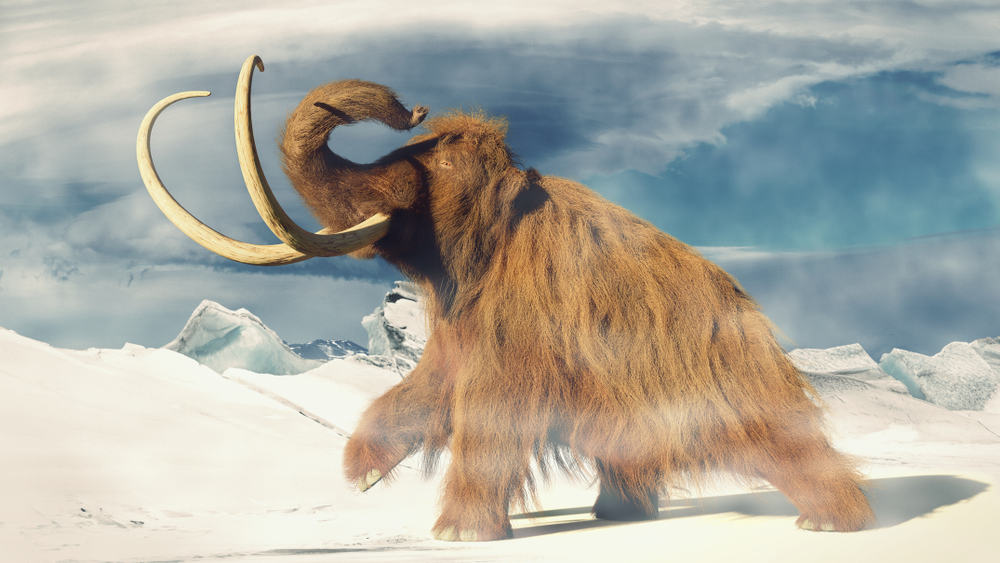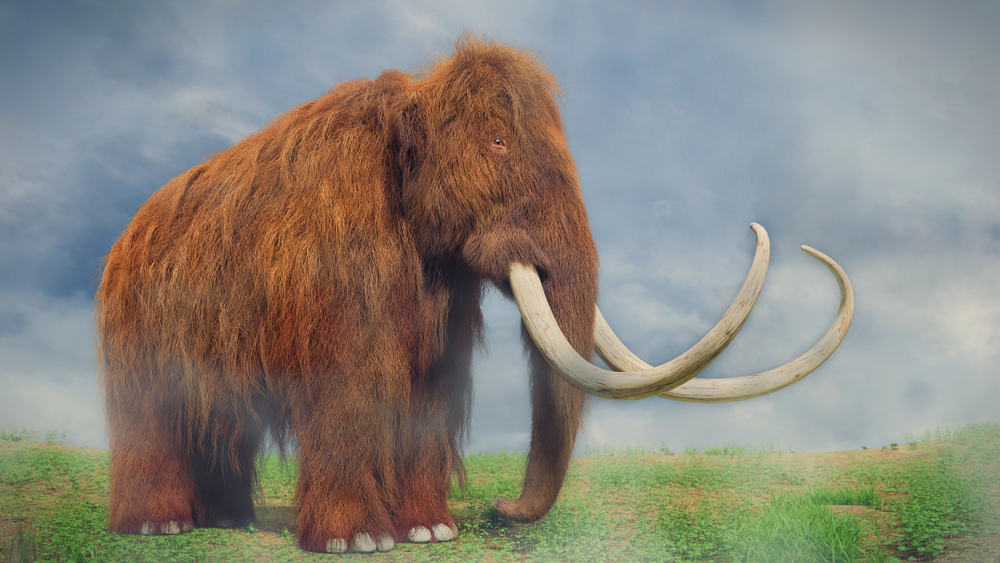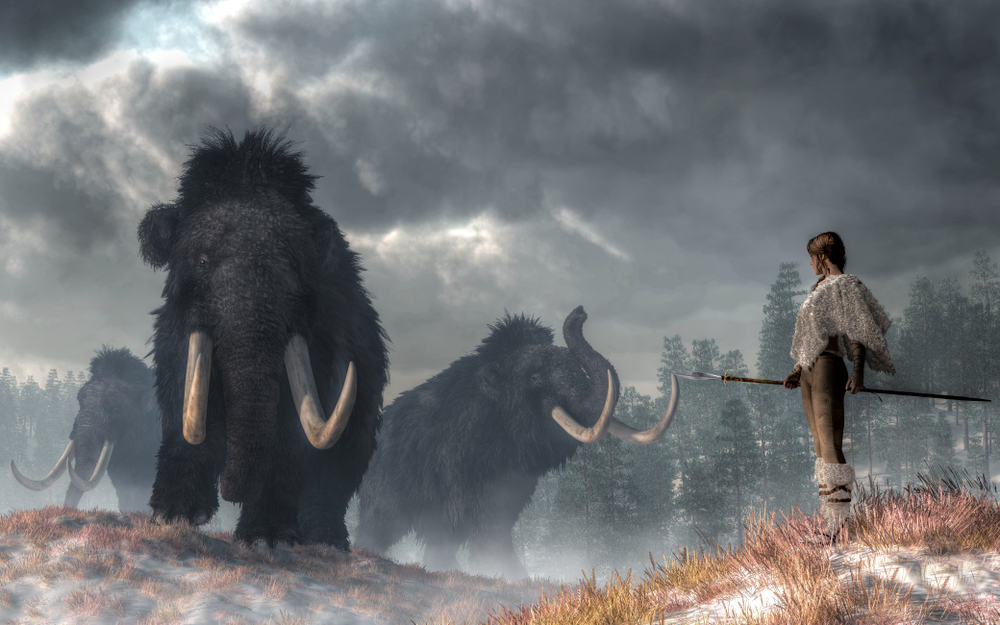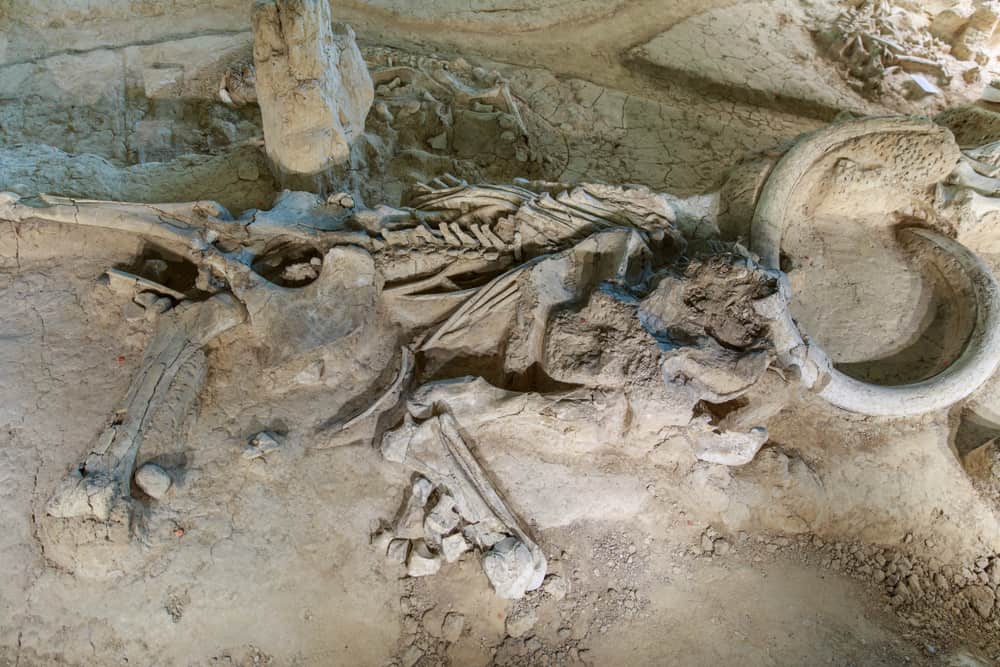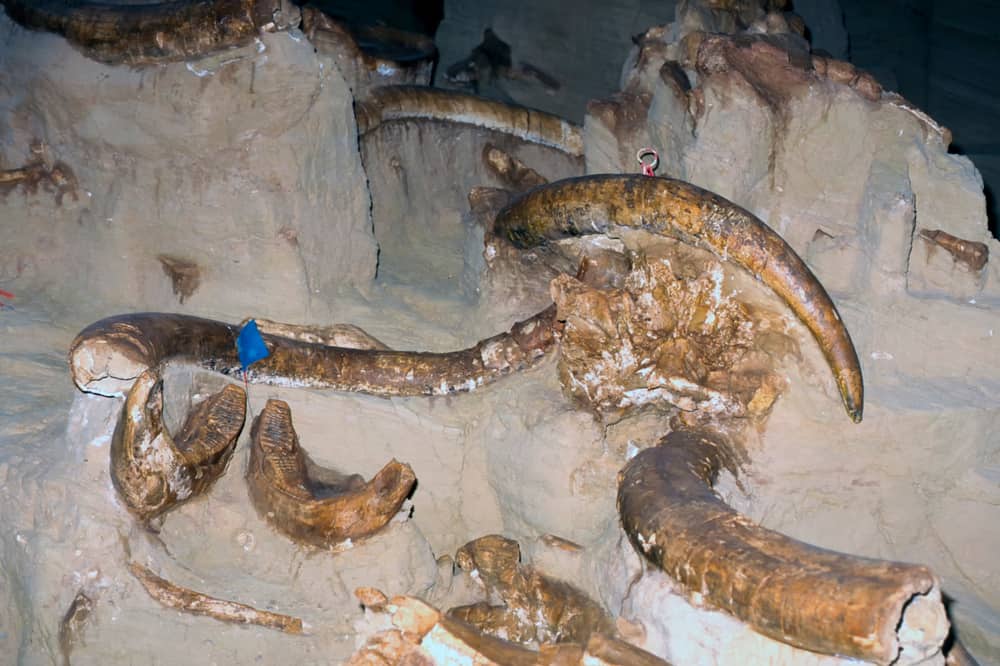What is a mammoth? It is a large extinct type of elephant with a hairy sloping back and long curved tusks. Most of the world’s mammoth remains are discovered in Russia each year. Some people prefer to believe you don’t need to uncover evidence of their existence because these animals are very much alive and well and living in the dense Siberian taiga or deep forests.
The woolly mammoth was relatively the same size as today’s modern African elephants. The male reached shoulder heights between 8.9 feet and 11.2 feet and weighed up to 6.6 tons. Females reached heights of 8.5 feet and 9.5 feet and weighed up to 4.4 tons.
But what did the woolly mammoth eat? Before we discuss this, let’s talk a little more about the woolly mammoth, discover some interesting facts, and what brought it to extinction.
Mammoth Habitat
Woolly mammoths lived on flat tundra and grasslands south of the ice sheets or continental glaciers. These areas were thought to have been covered in mosses, shrubs, and grasses.
Russian scientists examined the preserved bones of a fully grown woolly mammoth that roamed the Earth about 10,000 years ago. The local inhabitants found its remains in a Siberian Lake in the north part of the country.
Evolution
The mammoth is any member of the extinct group of elephants found as fossils over every continent except South America and Australia and in some regions of North America.
They are members of the family Elephantidae. Therefore, woolly mammoths were elephants. Scientists believe that woolly mammoths evolved 700,000 years ago from the populations of steppe mammoths found in Siberia.
DNA revealed that woolly mammoths had more similarities genetically to the modern Asian elephant than to the African species. Studies have reported that woolly mammoths and modern elephants share a common ancestor split into different species about six million years ago.
Interesting Facts
- Woolly mammoths weighed about 700 lbs. minimum. But they still slept upside down! They would hang from something or sleep on their side.
- Changes in the sea level would allow mammoths to swim to the Channel Island.
- One of the largest mammoths found was the Columbian mammoth. It was 14 feet tall at the shoulder, was 13 to 15 feet long, and it is estimated to have weighed a massive 18,000 to 22,000 lbs. Its tusks were up to 16 feet long.
- The largest woolly mammoth skeleton found was sold at auction for $645,000. The prehistoric bones were discovered in Siberia a decade ago by a professional hunter.
- What is the difference between a mastodon and a mammoth? The mastodon was shorter and stockier than mammoths and had shorter, straighter tusks. Mastodons were wood eaters, and their molars had pointed cones adapted for eating wood. Mammoths were grazers with their molars flat for eating grass.
- The Columbian woolly mammoth moved throughout America and parts of Mexico. They never ventured south of the country of Mexico.
- The mammoth came to America and Canada from Asia by way of the Bering land bridge. They began coming to North America 100,000 years ago and remained in Canada and Alaska.
- Some evidence tells us that humans hunted the mammoth. They would have been a dangerous animal to attack.
- It is estimated that 50% of the ivory sold to China is mammoth ivory.
- One of the oldest instruments made is a flute made from mammoth ivory.
- Most mammoth populations died out around 10,000 years ago, with a small population of 500-1000 living on Wrangel Island in the Arctic as recently as 1650 BC, approximately 1000 years after the Giza pyramids were constructed.
- Scientists are able to determine a woolly mammoth’s age from the rings of its tusks in a manner similar to judging a tree’s age from its rings.
- The Essex woolly mammoth was found in 1864 in England and is one of the most spectacular fossils discovered in the UK. It is believed to be around 200,000 years old and lived in a basically warm period between two Ice Ages. The tusks measured seven feet long and with the skull, about 13 feet long.
- Woolly mammoth tusks were used primarily for fighting. Each tusk is so heavy it requires two strong people to lift it. The tusks are larger than those of an elephant and have corkscrew-like shapes, crossing in the middle sometimes.
- Scientists, with the use of genetic sequencing, discovered that woolly mammoth hair was brown. Preserved woolly mammoth hair appears orange, but scientists believe the color was darker, perhaps black, but lightened with prolonged burial.
- In 1872, French adventurers headed to the North Pole discovered so many mammoth specimens that were well-preserved that, for a duration, they lived on baked, roasted, and broiled mammoth.
What Did Mammoths Eat?
Mammoths were herbivores and fed mainly on grass and ate other types of flowers and plants such as dandelions or milkweed. Mammoths are believed to have needed to consume 700 pounds of vegetation a day for survival. Mammoths were not meat-eaters.
Extinction
Some authorities believe mammoths eventually were hunted to extinction by the species that became the planet’s leading predator — the human.
Others feel that climate change was responsible. As the climate warmed, forests spread and replaced the mammoth’s grassland. Hunting may have tipped the balance once the mammoth population had declined significantly.
Other studies suggest that one of the last known groups of woolly mammoths died out due to a lack of drinking water.
Lyuba, the Baby Mammoth
Lyuba is a female woolly mammoth that died 41,000 years ago at the age of 30 to 35 days. She is one of the best-preserved mammoth mummies in the world, along with Yuka and Dima, a male mammoth.
Lyuba was discovered in May 2007 by a Russian reindeer breeder and hunter along with his three sons, who lived on Russia’s Arctic Yamal Peninsula. The man recognized that it was a mammoth carcass and a significant find. He refused to touch the carcass because the people of the area believed that touching the mammoth remains brought bad luck.
The calf mummy weighed 110 lbs. measured 33.5 inches in height and measured 51 inches from her trunk to her tail, which is approximately the same size as a big dog. Her teeth showed proof, after a study, that she was born in the spring following a gestation period similar in length to a modern elephant.
At the time of her discovery, she was remarkably well-preserved, with her eyes and trunk intact and fur remaining on her body. Her skin and organs were in perfect condition.
It is believed she suffocated by inhaling mud during a struggle while being bogged down in deep mud in the river her herd was crossing. Following her death, the body may have been preserved by lactic acid-producing bacteria, which essentially “pickled” her in nearly a pristine state.
Her organs and skin intact; scientists were able to identify milk from her mother in her stomach and fecal matter in the intestine. She may have eaten the fecal matter to promote the development of the intestinal microbial assemblage needed to digest plants.
Lyuba is believed to have been healthy at the time she died. Examination of her teeth provided insight as to what caused Ice Age mammals to become extinct. CT scans taken of Lyuba provided information to indicate that she inhaled mud and choked to death.
Lyuba’s permanent home is the Shemanovsky Museum and Exhibition Center located in Salekhard, Russia.
Woolly Mammoth
The woolly mammoth was a fascinating mammal that morphed into the modern-day elephant. Scientists have contemplated cloning the animal because so many of their corpses have been found so well-preserved. They have extracted DNA from them for testing. One of the particularly good specimens they found was Buttercup, a 50-year-old mammoth that lived about 40,000 years ago.
This DNA could be used to clone the woolly mammoths, making them no longer extinct. There is currently a project called the “Woolly Mammoth Revival” working toward making this idea a reality. This is a highly contested concept in the scientific world. Some objections are that the mammoth’s habitat is not the same as when they roamed the Earth. Where would they live? Others say that habitat could be created for them if they were brought back.
Whether this idea will become a reality is anyone’s guess. But the idea of this immense, hairy creature roaming the Earth again is a daunting one indeed. But where would you draw the line? Do we have a “Jurassic Park” situation here? If you can use DNA to resurrect a woolly mammoth, why not a dinosaur or any other extinct animal.
It will be intriguing to see the result of this idea in years to come. Who knows! We may have hundreds of animals roaming the Earth or birds flying in the air that people have never seen.
And what about our closest human relative, the Homo Neanderthalensis. It was stockier and shorter than current humans, but had the same brain size, made art, wore clothes, and buried their dead. Now that is a concept!
